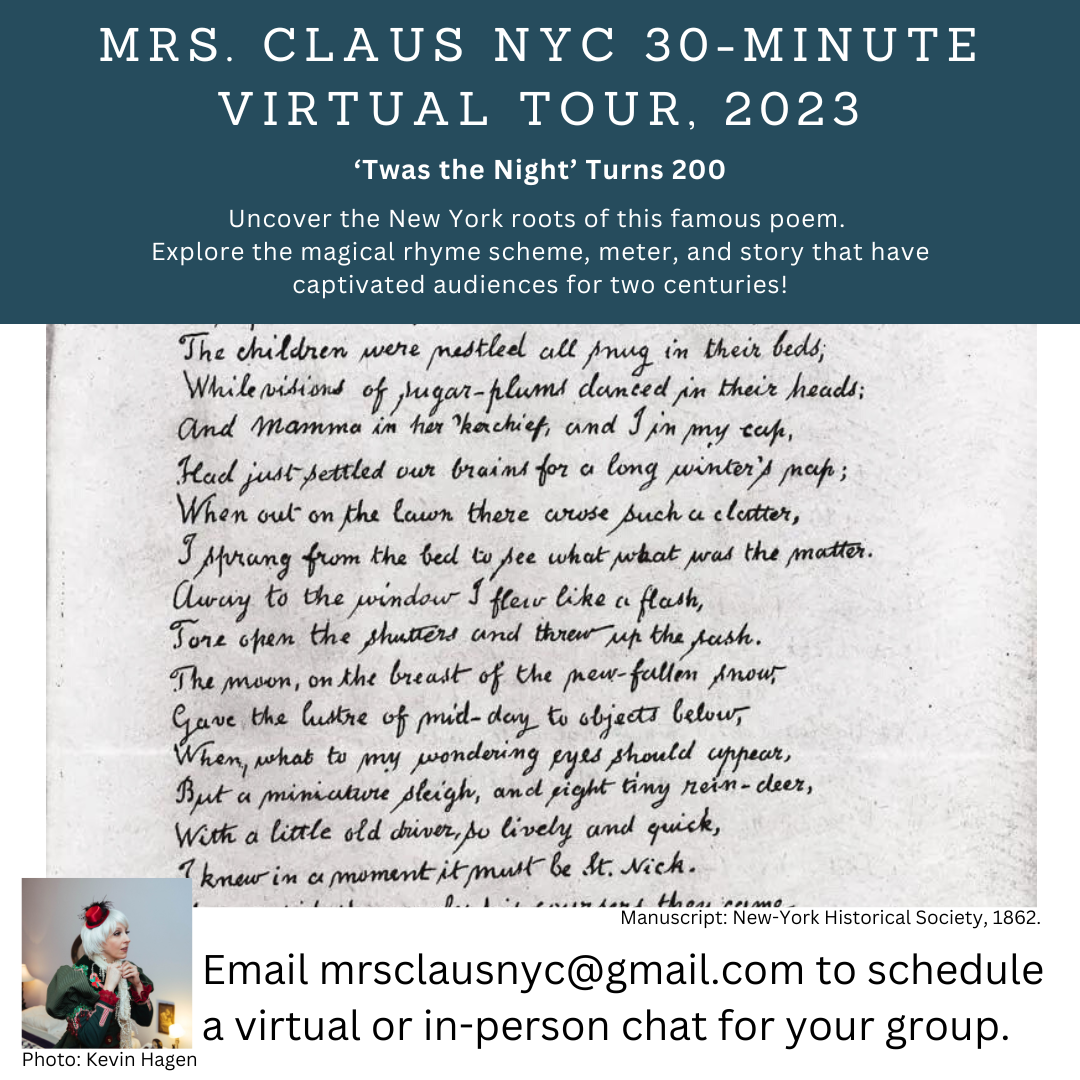"A Visit from St. Nicholas" turns 200 this year! You may know it better by "T'was the Night Before Christmas."🌲🌲
Last time, we talked about assonance, when vowel sounds get repeated.
Today, we will talk more about the storytelling.
The poem's SPEAKER and the poem's AUTHOR may be two different people. An author can invent a speaker and write from that person's point of view. In the land of imagination, an author can even make an inanimate object the SPEAKER.
Let's do some detective work. So who is the speaker in "T'was the Night Before Christmas"? Does the speaker have a gender? Physical attributes? Quirks? Is the speaker from the past or the future?
🟩"Mamma in her 'kerchief, and I in my cap"
🟩"I sprang from my bed to see what was the matter"
🟩"And I laughed when I saw him, in spite of myself"
In November, I did a practice teaching session to four Clauses. A Mrs. Claus in Ohio said she changes the speaker’s gender, so that SHE becomes the SPEAKER.
Yes! I love this.
The more I dive into the poem, the more I learn and enjoy. As a Mrs. Claus who can work alone without a Santa, I want to offer fun educational sessions about poetry. Write to me at mrsclausnyc@gmail.com if you’d like a fun lecture, online or in person. Follow my lessons on Instagram and Facebook.❤️❤️





